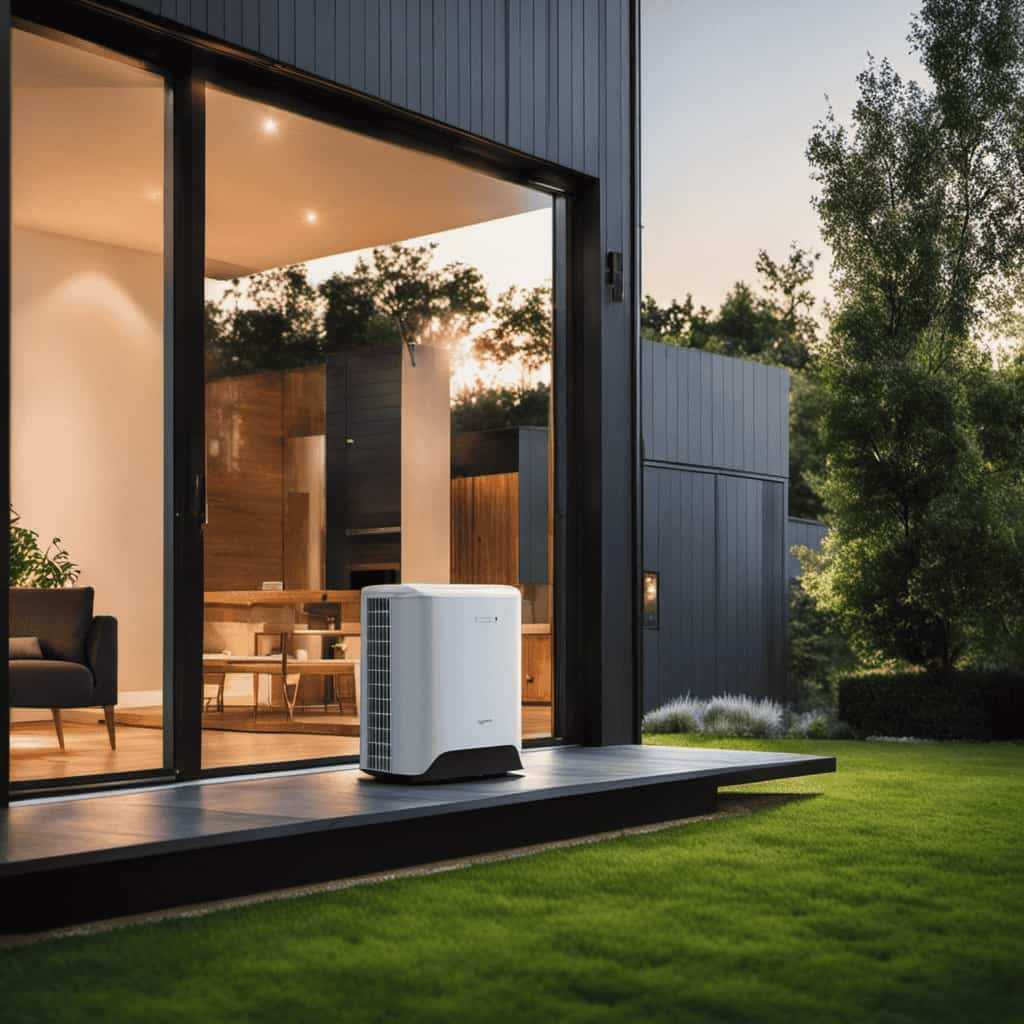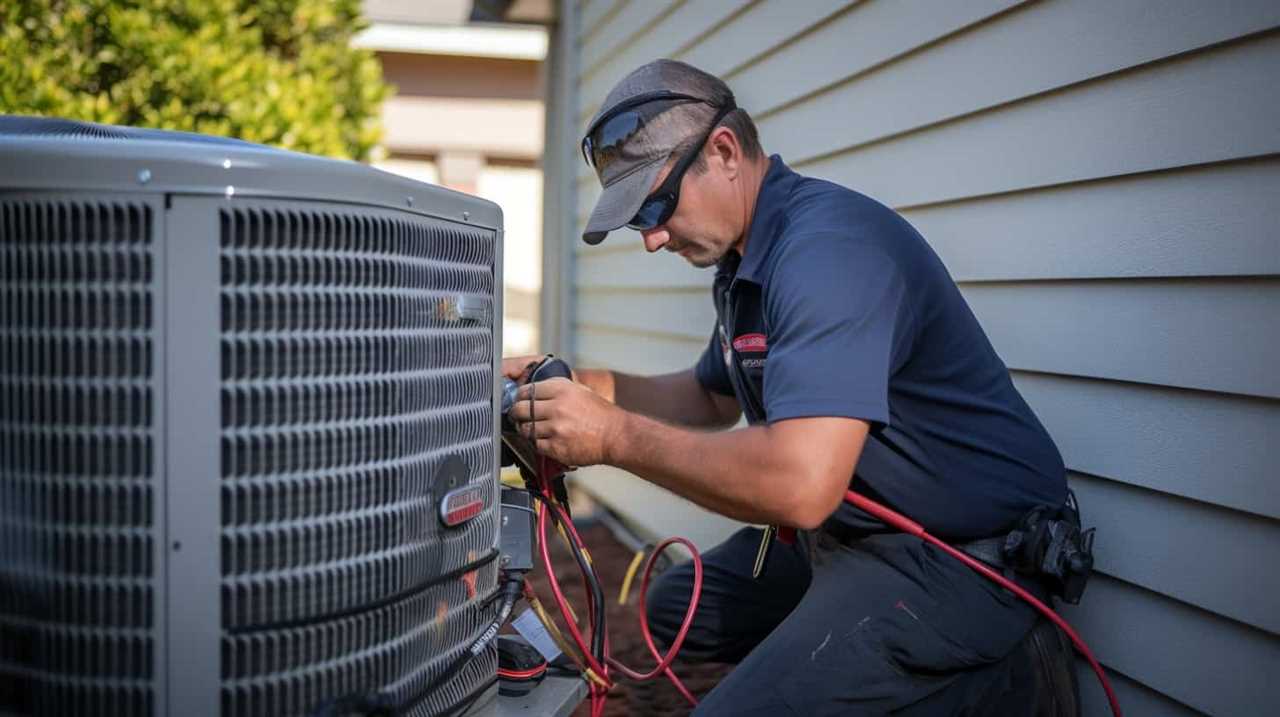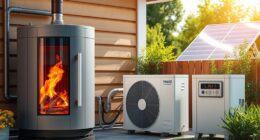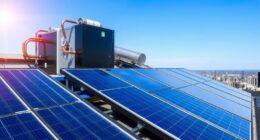Fed up with steep utility bills and the ecological consequences of conventional heating solutions? Search no more!
In our article, we delve into the innovative solution of renewable heat pumps. These efficient systems not only save you money but also reduce your carbon footprint.
We analyze the basics, explore different types, and discuss factors affecting efficiency.
Join us as we uncover the secrets to solving your energy woes with renewable heat pumps.
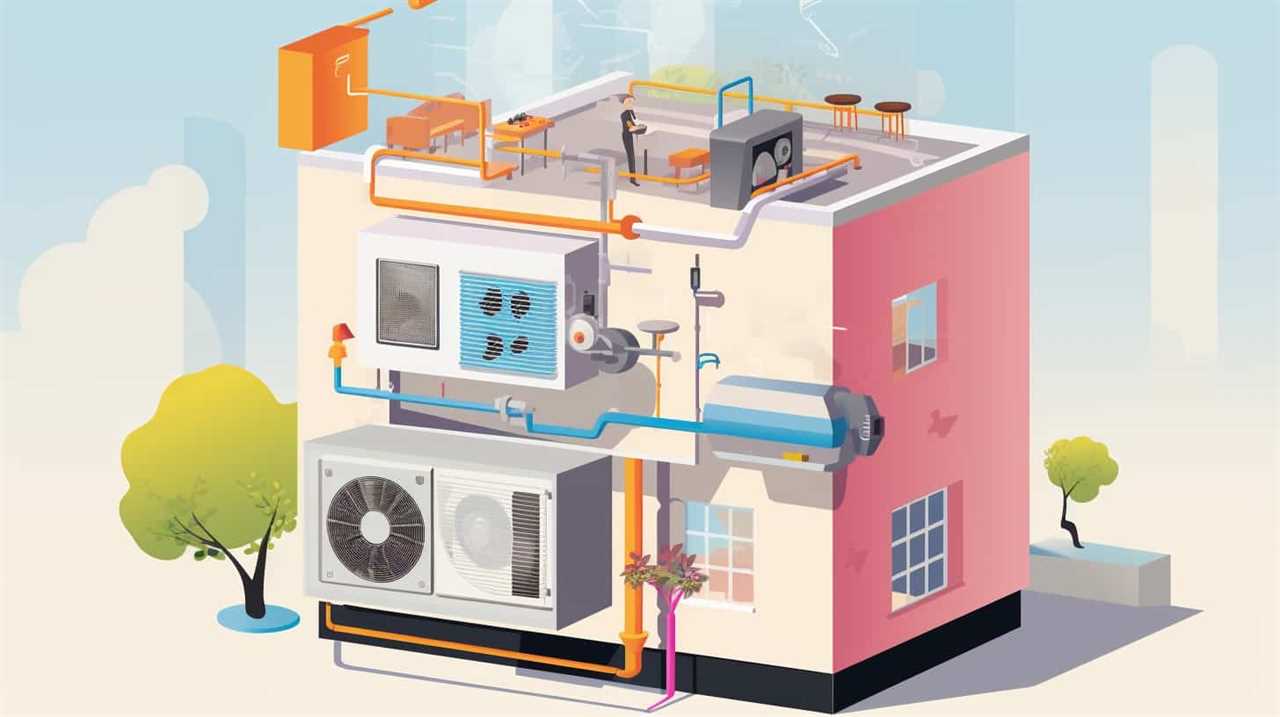
Key Takeaways
- Renewable heat pumps are highly energy-efficient, generating more heat energy than the electrical energy they consume.
- They can provide heating, cooling, and hot water, making them versatile and cost-effective.
- Different types of renewable heat pumps include air source, ground source, and water source heat pumps, each with their own advantages and limitations.
- Proper system sizing and correct installation techniques are crucial for optimal efficiency and to avoid energy losses.
The Basics of Renewable Heat Pumps
We’ll start by explaining how renewable heat pumps work.
Renewable heat pump technology utilizes the principle of extracting heat from the environment, such as the air, ground, or water, and transferring it to heat buildings or water. This process is achieved through the use of a refrigerant that absorbs heat from a low-temperature source and releases it at a higher temperature.
One of the advantages of renewable heat pumps is their high energy efficiency, as they can generate more heat energy than the electrical energy they consume. Additionally, they’re capable of providing heating, cooling, and hot water, making them versatile and cost-effective solutions for residential and commercial applications.
However, there are also some disadvantages to consider. Renewable heat pumps require a significant upfront investment, and their efficiency can be affected by extreme temperatures or inadequate insulation. Nonetheless, ongoing advancements in renewable heat pump technology continue to enhance their performance and overcome these challenges, making them a promising option for sustainable heating and cooling solutions.

Understanding the Energy Saving Potential
To fully grasp the energy saving potential of renewable heat pumps, we need to understand how they efficiently utilize and transfer heat from the environment.
Renewable heat pumps work by extracting heat from renewable sources such as the air, ground, or water, and transferring it to a building for space heating or hot water.
This process is accomplished through the use of refrigerants and a compressor. The heat pump increases the temperature of the extracted heat and delivers it to the building at a higher temperature, providing heating or hot water.
The energy saving potential of renewable heat pumps lies in their ability to harness heat from natural sources, rather than relying solely on fossil fuels.

This not only reduces greenhouse gas emissions, but also offers long-term cost effectiveness by reducing energy consumption and dependence on traditional heating systems.
Exploring Different Types of Renewable Heat Pumps
There are three main types of renewable heat pumps that are commonly used: air source heat pumps, ground source heat pumps, and water source heat pumps. Air source heat pumps utilize the outside air as a heat source, while ground source heat pumps extract heat from the ground. Water source heat pumps, on the other hand, extract heat from bodies of water. Each type of heat pump has its own advantages and limitations.
Air source heat pumps are the most commonly used due to their lower installation costs and ease of installation. However, they’re less efficient in colder climates and may require additional heating systems to supplement their performance.
Ground source heat pumps, also known as geothermal heat pumps, offer the advantage of stable temperature conditions underground, resulting in higher efficiency.
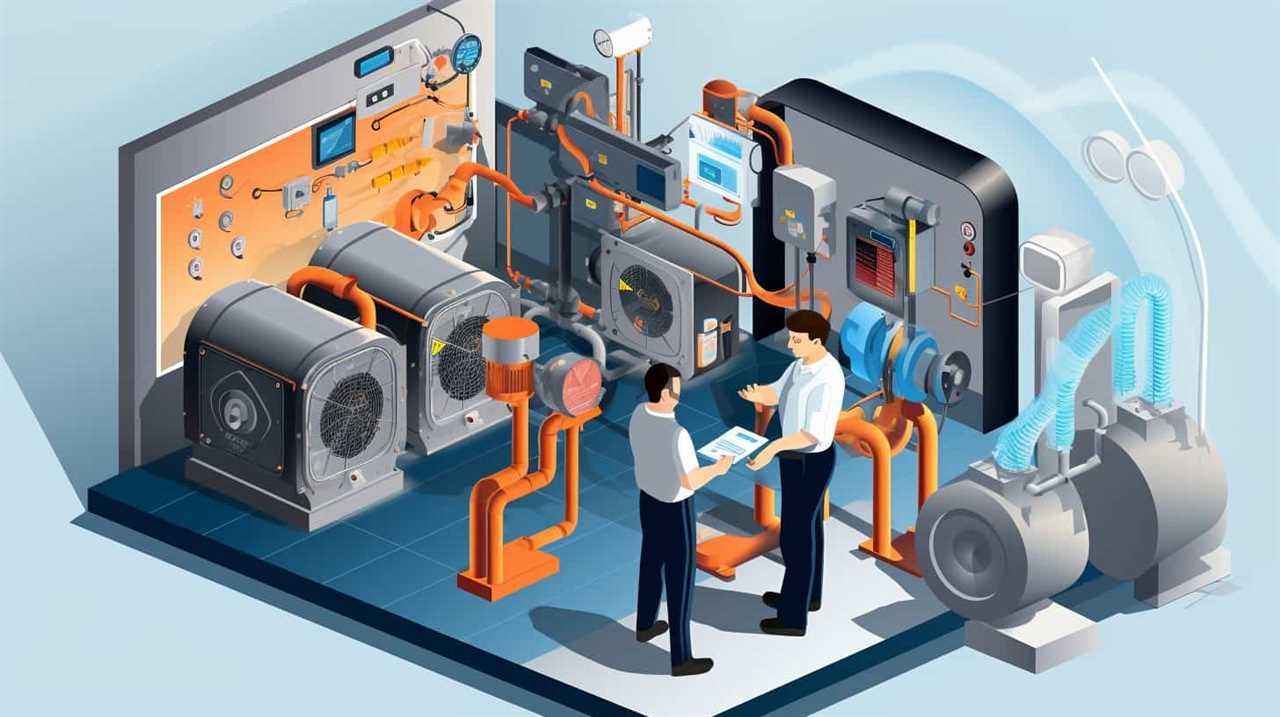
Water source heat pumps are similar to ground source heat pumps but utilize bodies of water as a heat source.
Understanding the different types of renewable heat pumps is crucial in determining the most suitable option for your specific needs. Factors such as sizing and installation will be discussed in the subsequent section, as they greatly affect the efficiency of these heat pump systems.
Factors Affecting Efficiency: Sizing and Installation
When it comes to optimizing the efficiency of renewable heat pumps, two crucial factors come into play: proper system sizing and correct installation methods.
Sizing the system accurately ensures that it can meet the heating demands of the space efficiently, while avoiding wasteful energy consumption.

Additionally, correct installation techniques ensure that the heat pump operates at its optimal performance level, minimizing energy losses and maximizing its efficiency.
Proper System Sizing
We recommend calculating the proper system size to ensure optimal efficiency of the renewable heat pump. Proper system sizing is crucial in achieving maximum energy savings and reducing overall energy consumption.
Here are some factors to consider when determining the size of the heat pump system:
-
Building insulation: The level of insulation in the building affects the heating and cooling load, which in turn impacts the size of the heat pump required.
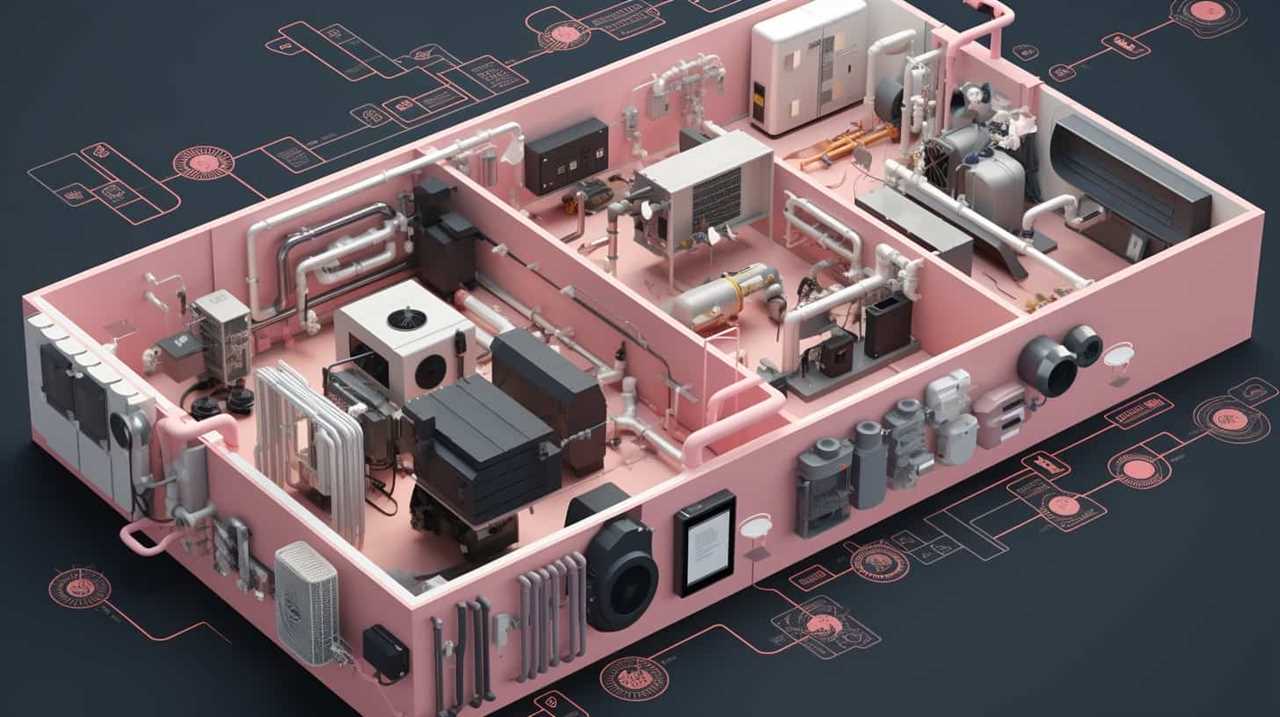
-
Climate conditions: The local climate plays a significant role in determining the heating and cooling requirements. Extreme temperatures may necessitate a larger heat pump to meet the demand.
-
Occupancy and usage: The number of occupants and their activities within the building influence the heat load. Factors such as the number of rooms, appliances, and hot water usage must be considered.
Correct Installation Methods
To ensure optimal efficiency of the renewable heat pump, we must carefully consider factors such as sizing and installation methods. Proper installation techniques are crucial for the performance and longevity of the system. When installing a renewable heat pump, it is important to follow manufacturer guidelines and industry best practices. Common issues can arise from improper installation, such as inadequate heat transfer, refrigerant leaks, or electrical faults. Troubleshooting these issues can be time-consuming and costly. Therefore, it is essential to hire qualified professionals who have expertise in renewable heat pump installation. By adhering to correct installation methods, we can minimize potential problems and maximize the efficiency of the system. Now let’s explore how we can further enhance efficiency through proper maintenance.
| Installation Techniques | Troubleshooting Common Issues |
|---|---|
| Proper refrigerant charge | Inadequate heat transfer |
| Correct electrical wiring | Refrigerant leaks |
| Properly sized ductwork | Electrical faults |
| Adequate insulation |
Maximizing Efficiency Through Proper Maintenance
Regular maintenance is crucial for optimizing the efficiency of renewable heat pumps. By performing routine maintenance tasks such as cleaning the filters, checking refrigerant levels, and inspecting electrical connections, homeowners can ensure that their heat pumps are operating at peak performance.

Additionally, implementing energy-saving maintenance tips like proper insulation and regular system checks can further enhance the overall efficiency of the heat pump, leading to significant energy savings and lower utility bills.
Regular Maintenance Benefits
By performing regular maintenance on our renewable heat pumps, we can maximize their efficiency and ensure optimal performance. To achieve this, it’s essential to follow a regular maintenance checklist to keep our heat pumps in top condition. This includes tasks such as cleaning or replacing air filters, inspecting and cleaning coils, checking refrigerant levels, and lubricating moving parts.
Importance of professional maintenance:
- Regular inspections by trained professionals can identify potential issues before they become major problems, preventing costly repairs and downtime.
- Professionals have the expertise to perform more complex maintenance tasks, such as checking electrical connections and calibrating controls, ensuring the heat pump operates at peak efficiency.
- Professional maintenance helps maintain the manufacturer’s warranty, providing peace of mind and protection against unexpected expenses.
Energy-Saving Maintenance Tips
Let’s focus on maintaining our renewable heat pumps to maximize efficiency and save energy.
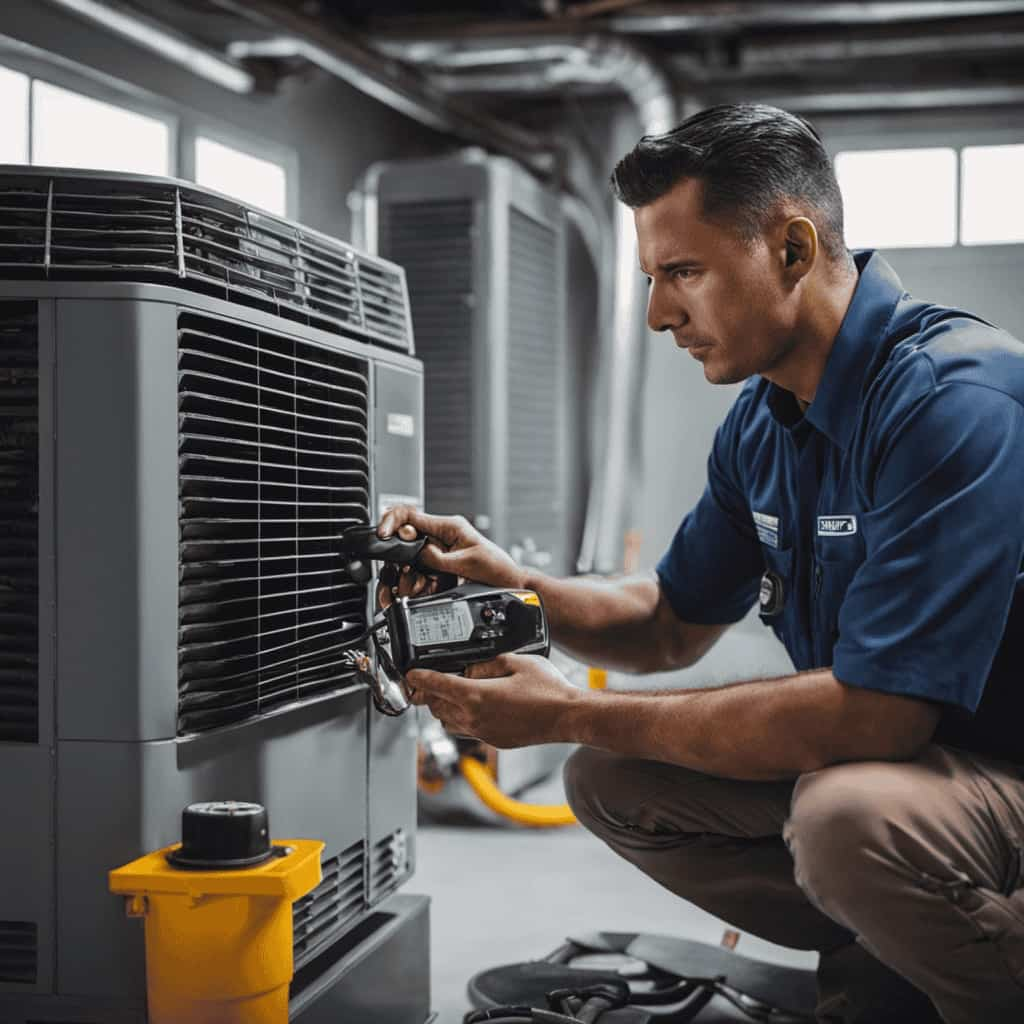
By following a few energy-saving techniques and troubleshooting tips, we can ensure that our heat pumps are operating at their highest level of performance.
Firstly, regularly cleaning and replacing air filters is crucial to prevent dust and debris buildup, which can hinder airflow and reduce efficiency.
Additionally, checking and cleaning the outdoor unit regularly helps to remove any leaves, dirt, or other obstructions that may impede its function.
It’s also important to inspect and seal ductwork to prevent air leaks, as these can lead to energy loss and decreased efficiency.
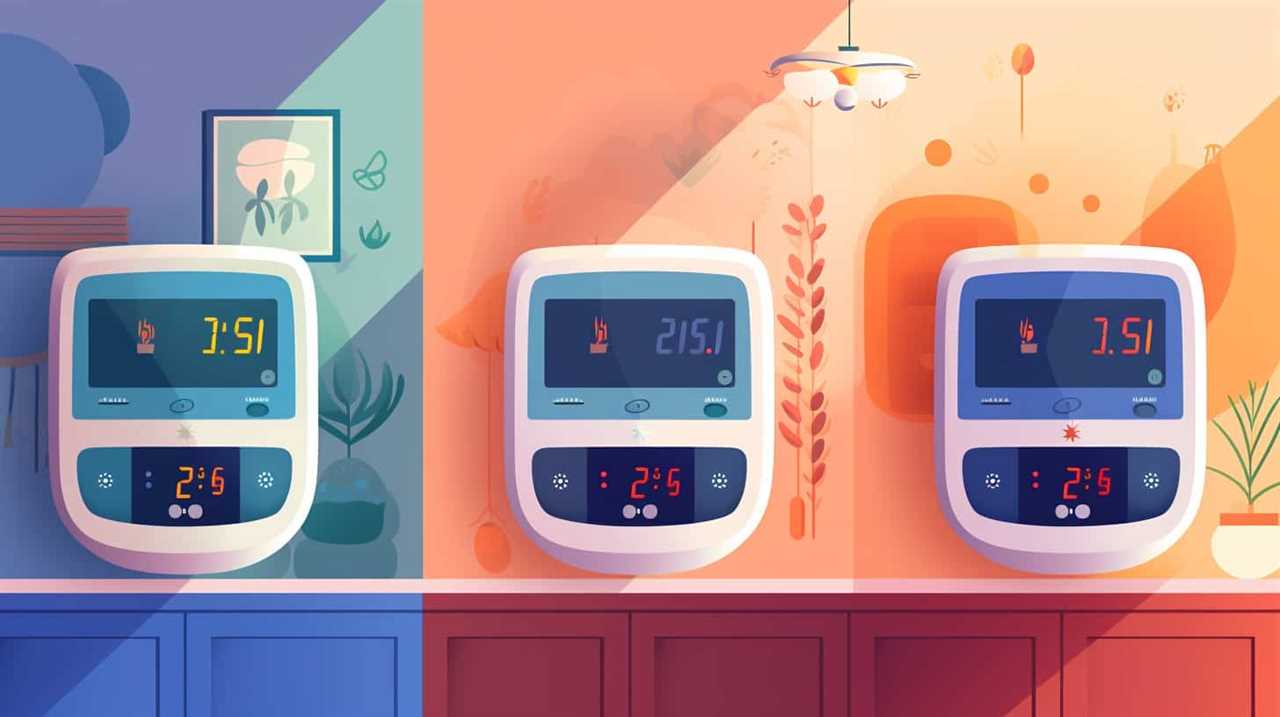
Lastly, scheduling regular maintenance with a qualified technician will help identify and address any potential issues before they escalate.
Optimizing Heat Pump Performance
To achieve optimal heat pump performance, we must prioritize maintenance and maximize efficiency through proper care. By implementing the following strategies, we can improve the performance and increase the effectiveness of heat pumps:
- Regularly clean and replace air filters to ensure proper airflow and prevent dust buildup.
- Schedule routine inspections by qualified technicians to identify and address any potential issues.
- Keep the outdoor unit clear of debris, such as leaves and twigs, to maintain unrestricted airflow.
These maintenance practices are essential for maximizing the efficiency of heat pumps, as they ensure that the system operates at its peak performance. By regularly monitoring and maintaining the heat pump, we can improve its overall performance, increase energy savings, and prolong its lifespan.
Now, let’s delve into comparing renewable heat pumps with traditional heating systems.
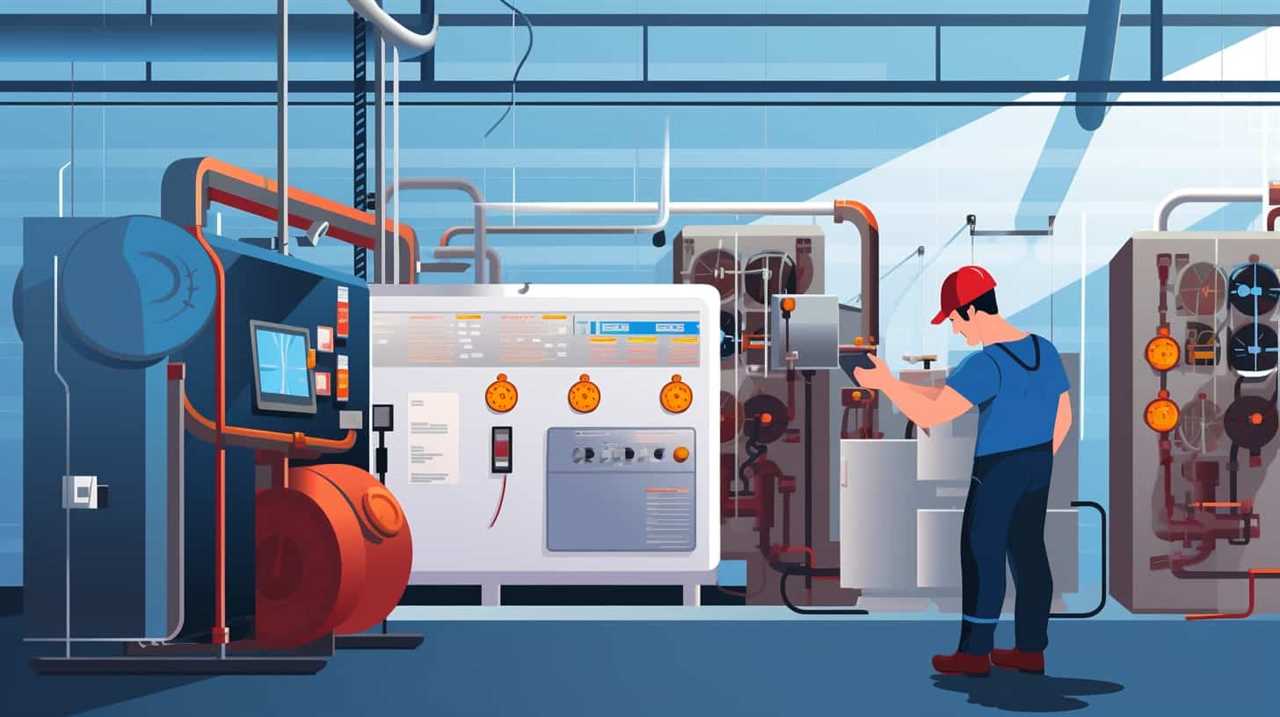
Comparing Renewable Heat Pumps With Traditional Heating Systems
The renewable heat pumps offer significant advantages over traditional heating systems in terms of efficiency and environmental impact. When comparing fuel efficiency, renewable heat pumps have been shown to outperform traditional systems by a wide margin. This is due to their ability to extract heat from the surrounding environment, such as the air or ground, and transfer it into the building.
Traditional heating systems, on the other hand, rely on the combustion of fossil fuels which results in significant energy loss and greenhouse gas emissions. In terms of environmental impact, renewable heat pumps have a much lower carbon footprint compared to traditional systems. They don’t produce any direct emissions and can be powered by renewable energy sources such as solar or wind.
Transitioning to renewable heat pumps is a crucial step towards reducing our reliance on fossil fuels and mitigating climate change.
Moving forward, we’ll discuss the challenges associated with adopting renewable heat pumps, specifically the cost and incentives required to make them more accessible to consumers.

Overcoming Challenges: Cost and Incentives
We must address the issue of affordability and incentives in order to overcome the challenges associated with adopting renewable heat pumps. While these systems offer numerous benefits, such as lower carbon emissions and increased energy efficiency, the initial cost can be a major barrier for many homeowners. To encourage wider adoption, it’s crucial to emphasize the cost benefits associated with renewable heat pumps.
To overcome the cost challenge, it’s essential for governments to provide support and incentives. This can include financial assistance such as grants or subsidies, as well as tax credits or rebates. Government support plays a crucial role in making renewable heat pumps more accessible and affordable for homeowners.
In addition to financial incentives, raising awareness and providing education about the long-term savings and environmental benefits of renewable heat pumps can also encourage adoption. By highlighting the positive impact on both the environment and household budgets, we can overcome the cost barriers and drive the widespread adoption of renewable heat pumps.
Frequently Asked Questions
What Are the Different Types of Renewable Heat Pumps Available in the Market?
There are two main types of renewable heat pumps available in the market: geothermal heat pumps and air source heat pumps. These technologies harness the natural energy from the ground or air to efficiently heat and cool buildings.
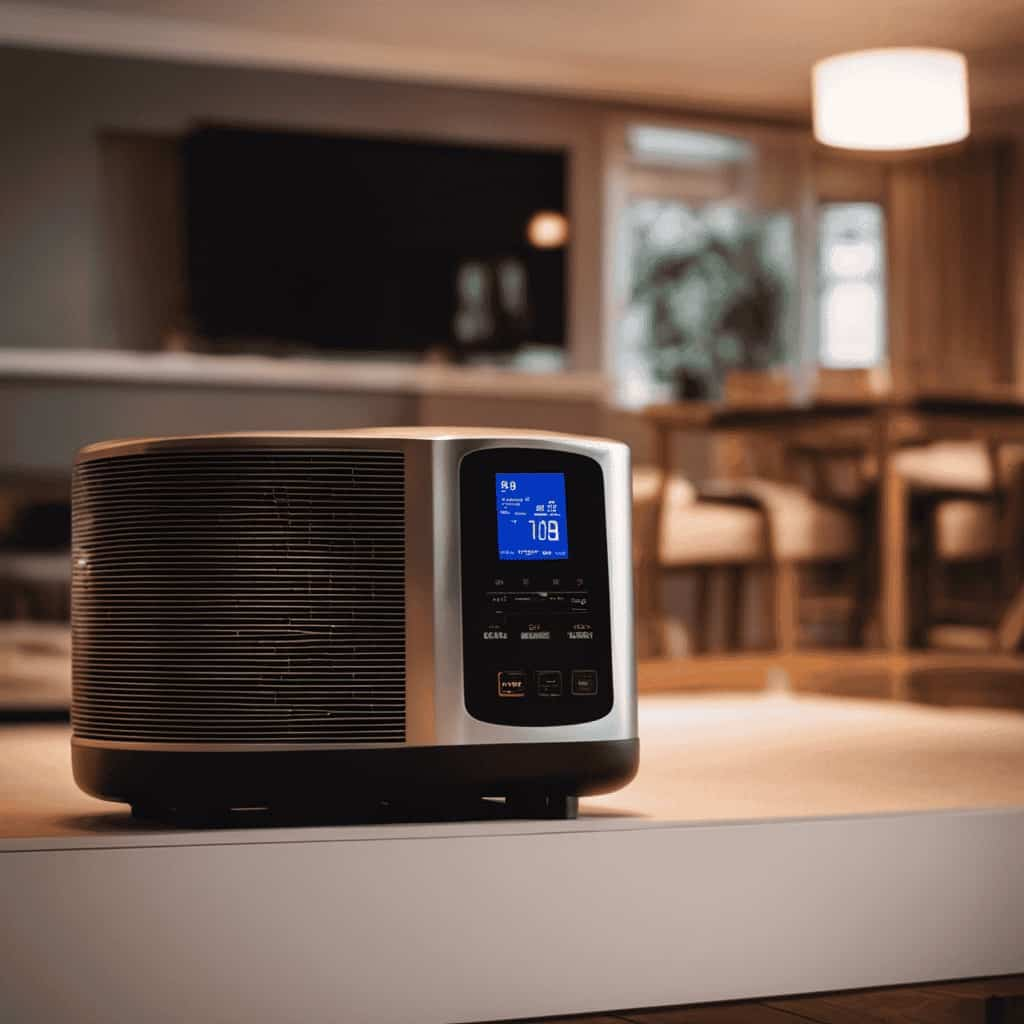
How Does the Sizing and Installation of a Renewable Heat Pump Affect Its Efficiency?
The sizing impact and installation techniques of a renewable heat pump significantly affect its efficiency. Properly sizing the heat pump ensures optimal performance, while correct installation techniques ensure efficient operation and maximum energy savings.
What Are Some Common Maintenance Practices That Can Help Maximize the Efficiency of a Renewable Heat Pump?
Regular maintenance practices are crucial for maximizing the efficiency of a renewable heat pump. By performing routine inspections, cleaning filters, and ensuring proper airflow, we can achieve optimal energy savings and prolong the lifespan of the system.
How Does the Efficiency of Renewable Heat Pumps Compare to Traditional Heating Systems?
When comparing the efficiency of renewable heat pumps to traditional heating systems, our analysis focuses on the comparison of energy consumption and the environmental impact. We aim to provide innovative solutions for a more sustainable future.
Are There Any Financial Incentives or Government Programs Available to Offset the Cost of Installing a Renewable Heat Pump?
Financial incentives and government programs can help offset the cost of installing renewable heat pumps. These initiatives aim to promote clean energy adoption and provide financial support to individuals and businesses investing in renewable heating technologies.
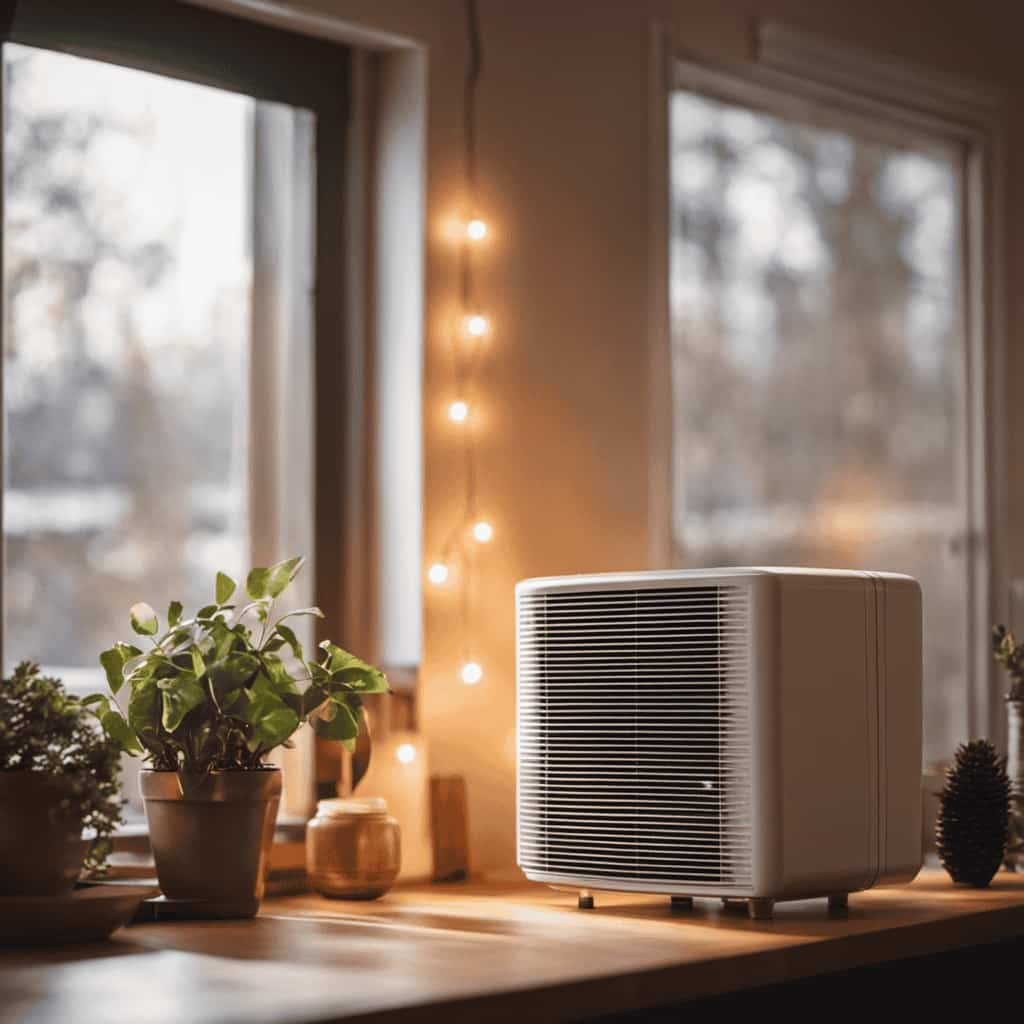
Conclusion
In conclusion, renewable heat pumps offer a promising solution to our energy woes. With their impressive energy-saving potential and a variety of options available, these pumps can efficiently heat our homes while reducing our carbon footprint.
By properly sizing, installing, and maintaining these pumps, we can maximize their efficiency and enjoy long-term cost savings.
So let’s embrace renewable heat pumps and say goodbye to traditional heating systems. It’s time to heat our homes in a way that’s both environmentally friendly and economically sound.
